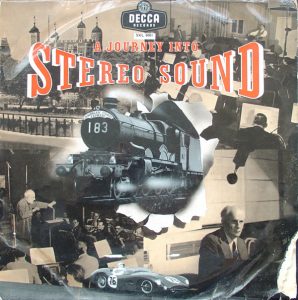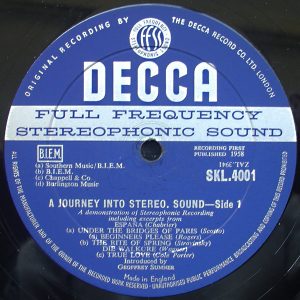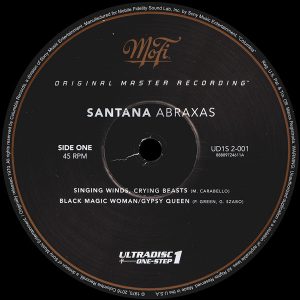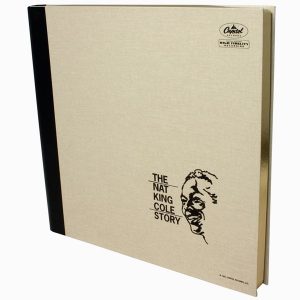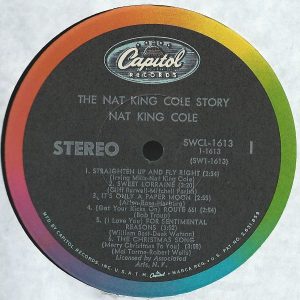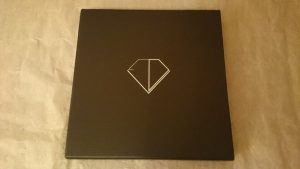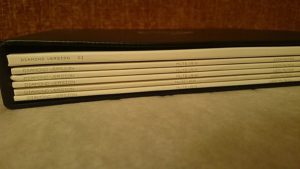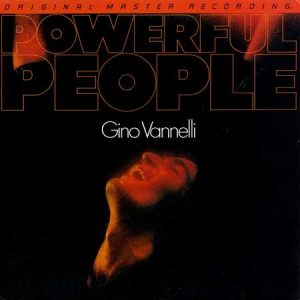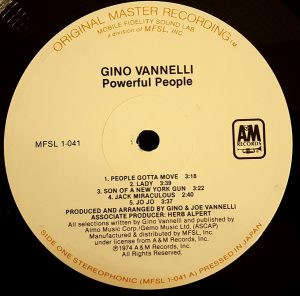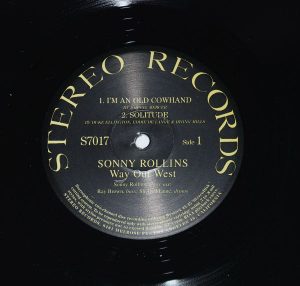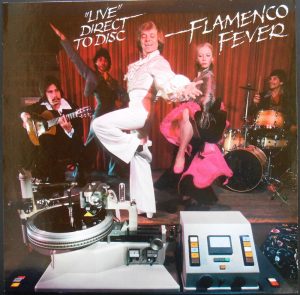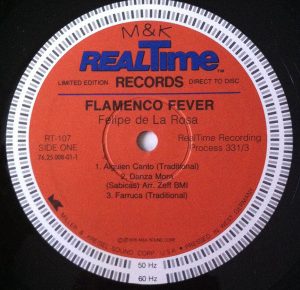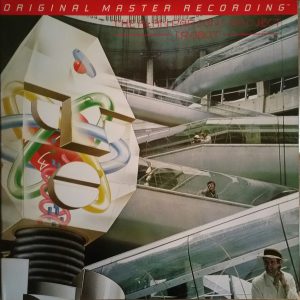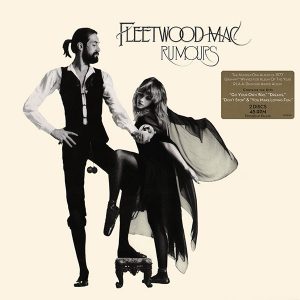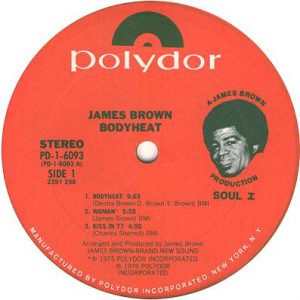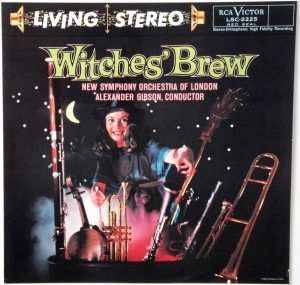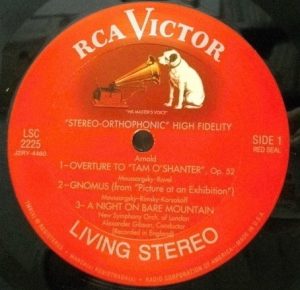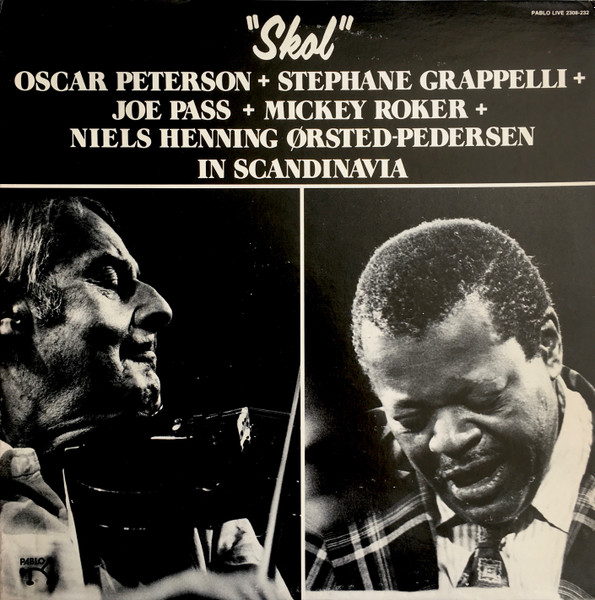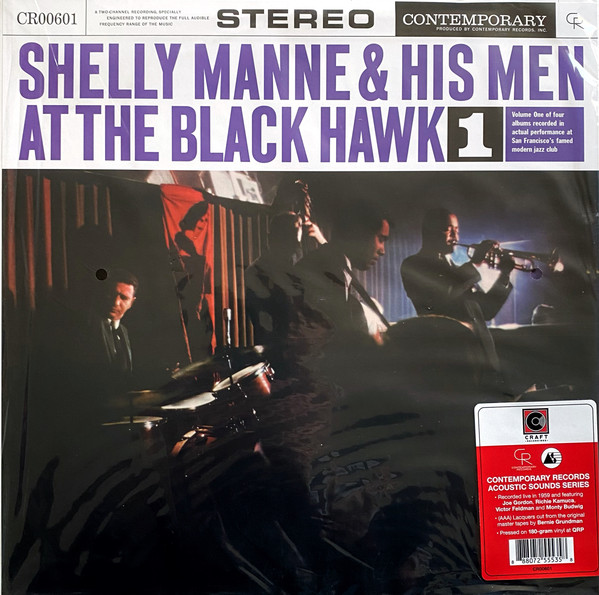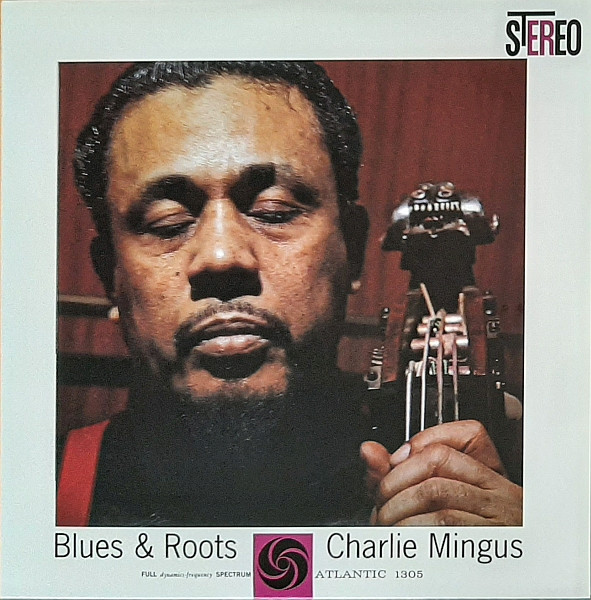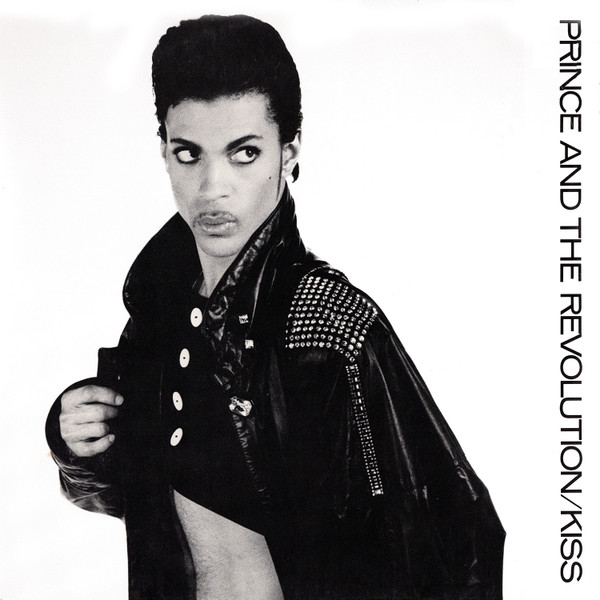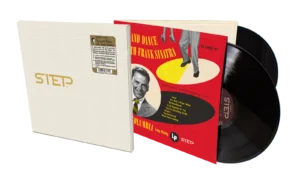This is an ongoing project by Claude Lemaire of Soundevaluations. Here is the first 10 of his Top 500 SuperSonic List...
"This is a journey into sound. A journey which along the way will bring to you new colour, new dimension, new value..."
What better way to introduce this new long term project than to quote Geoffrey Sumner's spoken words at the beginning of the classic 1958 Decca compilation A Journey Into Stereo Sound [SKL 4001]. Nearly six decades since the introduction of stereo sound onto vinyl, and seven since Columbia cut the first 33 1/3 rpm microgroove LP for commercial release—the latter coincident in time with the advent of magnetic tape recording in the U.S.—I felt it appropriate to create this Reference List for those about to 'jump on this train' for the very first time, and for those already aboard; perhaps eager to discover some new or old hidden gem to add to their precious collection. In that frame of mind, I am limiting the scope of the project to great recordings, going back to that early hifi period right up to the present, released on vinyl, either as LPs, EPs, or singles. This is a long term project that will take several years to complete. In order to keep things rolling, a capsule-type review instead of an in-depth evaluation will accompany each selection, along with the picture of the album or single, and the recommended label pressing and country of origin. When not specified, the U.S. pressing is always the default option. If a full review of a selection already exist, a link to the latter will be provided at the end of the capsule. There are no individual ratings but I will try to set the 'sonic bar' at no less than 8/10 and give priority to those surpassing 9/10 in my judgement. Contrary to a 'Rolling Stone-type' of list where albums are chosen on musical merit or relevance with no mention of sound quality whatsoever, and the extreme polar opposite—a 'purely audiophile-only' list—where sometimes sub-par music value is overlooked by extraordinary sound, I will endeavor to bridge the gap between these two solitudes. One last note: the order within the list is largely arbitrary and only there to reflect where we are situated in the project's time frame; i.e. number 25 is not necessarily better or worse than number 50; it is impossible to assign a preference order when dealing with so many different music and production styles. Like any list out there, personal tastes will differ between individuals, so always keep in mind that these are my Top 500 favorites chosen from the 'roughly' ten thousand titles from my Vinyl Vault after 42 years of collecting records.
Buckle your seat and let the journey begin...
1. Santana, Abraxas. Columbia KC 30130 (1970), MoFi UD1S 2-001 Box (2016), (2x45 rpm), #0338. Genre: latin rock, latin jazz, fusion, psychedelic rock, heavy rock.
I pondered the question numerous times: what would be my very first entry? Then I thought, why not launch the new year and Top 500 List with the recent reissue of Santana's second and probably best album by a label celebrating its 40 year anniversary in 2017. Always dedicated to delivering the best possible sound from past 'catalog classics', this limited edition LP box represents the first of a new unique series of records designated 'UD1S', wherein the 180 gram vinyl is pressed following a 'one-step' process instead of the industry's' standard three-step: the stamper ("convert" is MoFi's term) is made from a part pulled from the lacquer; in effect, skipping the father and mother intermediates altogether; and by logical assumption, approaching with greater fidelity the original lacquer and by extension, the master tape. Being the oldest audiophile reissue label out there and I assume having one of, if not the largest, most diverse catalogue, they've experienced some hits and misses along the way through the years, but I can say with all certainty that this latest Santana hits a homerun, and occupies a league all of its own. It is outstanding in every sonic parameter: tons of detail, from the opening wind chimes and cymbals; followed by Carlos' electrifying lead guitar; percussive congas, tablas, and timbales; powerful drums, keyboards, heavy organ, and organic bass; super-wide, deep, and tall soundstage; dynamics; perfect tonal balance; non-fatiguing, airy sound; impressive immediacy and raw energy; need I say more? Credit must be given in part to recording engineers David Brown and John Fiore, whose wonderful work is now more apparent than ever with this remastering-cutting by Krieg Wunderlich assisted by Shawn R. Britton. It vastly surpasses the previous version in 2008—the single 33 1/3 rpm half-speed mastered by Britton [MFSL 1-305]—which at the time I found quite good, rating it around an 8.5 or so; but when juxtaposed in sequence, track by track, respectively, the standard MoFi takes quite a dive to the latest one, showing less presence; size; impact...well everything; as if diluted; with even a hint of listener fatigue creeping in on some tracks. Needless to say, it blows away my old '360 Sound' Canadian pressing nearly to the 'dustbin'. Having being impressed by passed remasterings by SRB—think Pixies' Surfer Rosa [MFSL 1-296]—thus putting aside any cutting engineer superiority of one over the other, and supposing MoFi used the same Santana master tape in 2008 as this time, we must come to the conclusion that the major improvement is due to the double-45 rpm format and/or the UD1S pressing. Based on their latest 45 rpm editions like I Robot and Miles Davis' for example, which were quite a leap from their regular 33 1/3 rpms, I would guesstimate roughly a 65% improvement ratio due to the higher speed and the remaining 35% for the 'one-step' method. The box-type packaging is super-deluxe in texture and looks; quite above their usual fare. Now if only all records were made like this, we would be in heaven. Definitely one of the best, if not the best rock recording and tape to disc transfer ever; such a shame it was already sold out for good within a month or so upon release.
2. Nat King Cole, The Nat King Cole Story. Capitol SWCL1613 (1961), Analogue Productions AAPP 1613-45 (2010), (5x45 rpm), Compilation Box Set. Genre: traditional pop standards, easy listening, vocal jazz.
Nat King Cole along with Frank Sinatra are my two favorite male singers of all time and I am not alone in that regard. Both are considered masters of their craft in their own way, their voice always delivered with perfect phrasing, timing, and emotional sincerity. Luckily Capitol Studios and the golden age of recording—from the mid-1950s to the early 1960s—served them well sonic wise. This is especially true here with Cole and the dedication by remastering engineers Steve Hoffman and Kevin Gray who instead of relying on the usual 2-track masters went one step further: back to the original 3-track analog session reels and with lots of TLC, remixed the blend of the central vocal track against the left and right orchestral tracks, using a lighter touch on the reverb knob compared to the excess of the period, and cut at 45 rpm no less. It pays off handsomely and all comes down to the most impressive vocal recording ever in areas of size, power, delivery, dynamic contrasts, transparency, clarity, and intimacy; sometimes startlingly so by Cole 'jumpin out' way past the front of the soundstage. Not to forget the sweet refined timbral qualities of the orchestra and its strings in particular, plus a spot-on analog warm tonal balance without overdoing it. The deluxe packaging is top notch and superior to the original with a canvas-bound embossed box, including an informative album-size booklet with b&w photos of 'King' in studio. Without doubt, so is the sound which makes this collection of sweet love songs and traditional pop, a no-brainer. Many other N.K. Cole LPs of the period were reissued and remastered by this same team of players and worthy of inclusion but if condemned to own only one, this is the one to get.
3. Diamond Version, Diamond Version Boxset. EP1 Mute 12DVMUTE1 (2012); EP2 Mute 12DVMUTE2 (2012); EP3 Mute 12DVMUTE3 (2013); EP4 Mute 12DVMUTE4 (2013); EP5 Mute 12DVMUTE5 (2013); 45 rpm each + LP CI STUMMDV1 33 1/3 rpm; Box Set Compilation. Genre: minimalist dark techno. Euro pressing
Growing up in East Germany, the Diamond duo composed of Olaf Bender and Carsten Nicolai distinguish themselves from many other electro groups and styles by their exploration into a whole other universe that relies on granular synthesis. Similar to music sampling, granular divides the sample into smaller pieces between 1 and 50 ms of duration only, making this particular production all the more special. This is without a doubt the most impressive recording, mastering, and lacquer-cutting I have heard, and even viewed vinyl wise, in this electro subgenre. This gives new meaning to Decca/London's original 'ear trademark' ffrr. These EP's really do reach deep down into the lowest registers and all the way up to the other end of the spectrum, with world class solidity and stunning staccato pounding and hammering. Trust me this will test the tenacity of your speakers and system; think German industrial military precision and you start to get the idea. It is mind boggling, listening and realising, just how much a simple 'stone riding a groove' can physically impart such sheer visceral force, drive, and intensity. Mastering/cutting engineer Andreas Lubich aka LUPO is not one to 'slap on' a low-cut filter just for the sake of extending the life of his cutter head; sonic compromise is not part of his vocabulary. At the time, I had bought these five EPs separately, but a year later London-based Mute records regrouped them—plus threw in a bonus in the form of an additional LP—in a nice matching box which makes this recommendation all the more enticing. For a more in-depth evaluation, you can go to: http://soundevaluations.blogspot.ca/2016/12/diamond-version.html
4. Gino Vannelli, Powerful People. A&M SP-3630 (Can.) (1974), MoFi MFSL 1-041 (JVC) (1980), 33 1/3 rpm. Genre: funky synth-pop, disco, jazzy soulful pop.
This is the Italian-Canadian singer's second and best album, musically and sonically, and it's no wonder why Mobile Fidelity Sound Labs had chosen way back in their half-speed JVC-pressed virgin vinyl days, of showcasing their superior version to the regular A&M original. Although Gino and older brother Joe would keep 'the river flow' with hits streaming from 1976's The Gist of the Gemini; 1978's Brother to Brother [both on A&M]; and in a totally different style and colder compressed sound; 1984's Black Cars [Polydor]; Powerful People remains the only LP worthy of recommendation on this List at the present time. Vannelli's compositions with bro's sophisticated arrangements, showcase the singer's sensuous soaring vocals, supported by some powerfully tight musicianship, mixing majesty with energy, and providing a beautiful balance of smooth and faster tempi material with a few flirts of jazz overtones. As the discofied groove of "People Gotta Move" packs a punch upon first entry, the initial and lingering impression is one of stupendous speed, solidity, and soundstage size. Swirling synths and organs, spiced up with organic percussive instruments, electrify the room's air molecules, complementing each other on every track. With meticulous mixing and engineering by Larry Forkner and Tommy Vicari; this 'old' MoFi LP, cut by the late and great Stan Ricker, has it all in spades: full range even-balanced frequency, tight punchy drums, 'elastic' bouncy bass and most impressive of all, is the sense of a limitless dynamic ceiling with unbounded soundstage dimensions that defies any common logic.
5. Sonny Rollins,Way Out West. Contemporary C3530 (mono) (1957), Stereo Records S7017 (1958), Analogue Productions AJAZ 7530 (2003) (2x45 rpm). Genre: jazz, hard bop
Following the critical success of Saxophone Colossus for Prestige the year before, this 1957 recording sees the master tenor joined by Ray Brown on bass and Shelly Manne on drums, making it his first foray as a trio and for Contemporary Records. Started in 1951 by Lester Keonig, the small independant Los Angeles label was at the forefront of recording jazz stereophonically as far back as 1956, two years prior from stereo LPs entering the main market. This coincides with engineer Roy DuNann—formerly of Capitol since a decade—bringing his skills to their new 'studio'; in reality, the corner of a tight backstore sharing space with the shipping room, surrounded by shelves of records. Armed with a handful of outstanding mics, AKG C12s and Neumann U47s—both high output, tube condenser types—fed directly into an Ampex 350-2 tape recorder with only hand-built 'pots' inserted for level-adjustment; this is Rollins' best sounding LP, especially in terms of warmth and sheer realism. By all accounts, this seems to be the very first jazz vinyl reissue by Acoustic Sounds' then newly-formed label, Analogue Productions. Initially remastered by Doug Sax with tube electronics and released as a single 33 1/3 rpm in 1992 [APJ-008], it sounded awesome and was already a great reissue at the time. Fast forward a full decade later when they decide to re-release it as a double 45 rpm, this time by the remastering duo par excellence—Steve Hoffman and Kevin Gray—to even more impressive heights than before: with better double bass plucking and pitch precision; as well as superior top octave extension and intimacy on the cymbals; snare brush-stroke patterns; and percussive drumstick nuances. According to tech notes and photos, the instruments were captured close up and dry, leaving the mastering engineer the task of adding 'plate reverb' at the very end just prior to the cutting stage and which, in this instance, appears either left out or kept at a minimum—to my great delight I might add. Being extra critical, I would wish for a fraction of a dB more in the lower mids (around 400 to 600Hz) to better unleash Rollins' power and 'bark' but that's it as far as nit-picking goes. From 1956 to 1963, DuNann and Contemporary never released a boring or bad sounding LP and believe me their 'batting average' was way high, placing them at the very top with Orrin Keepnews' Riverside label up to par or coming in a close second sound wise.
6. Felipe De La Rosa, Flamenco Fever. M&K Realtime Records RT-107 (1978), 33 1/3 rpm. Genre: traditional flamenco. Live direct to disc cutting. German pressing (yellow label).
It is somewhat rare when high end audio manufacturers decide to dip their toes into the art of recording and disc pressing—think Mark Levinson, Wilson Audio, Linn—oftentimes with lackluster results and excitement; what is rarer though, is when said company actually produces quite the opposite: a truly hot demo recording of reference calibre. Such is the case with this 1978 release from M&K Realtime Records—aka M&K Sound of (Jonas) Miller & (Ken) Kreisel subwoofer fame, who entered the D2D LP niche audiophile market back in 1976; pretty much during the heyday of that minimalist 'back to basics', ancient, and restricted practice of 'putting to wax' live music. If ever a record redefined the definition of PRAT and simultaneously presented a major challenge for every link in the recording and reproducing chain, all the while engagingly captivating its audience, this is the one absolutely. The rapid-fire percussion from the palms of the hands in conjunction with the flat and tap of the feet from the flamenco dancer sharing the stage either with a spanish guitar or dynamic drum kit, are a feast for the ears, as must have been for the eyes of those present. Captured and cut with stunning slam and physical impact along with realistic, tight, tom drum timbres; this German pressing is a sure show stopper when properly reproduced. My only reservation regarding the recording is some slight saturation on the close-miked vocals during the singer's climactic fortes—perhaps 'overtaxing' the mic's diaphragm or preamp—and which may be system-dependent up to a certain point, in the context of groove trackability and acoustic dynamic compression.
7. The Alan Parsons Project, I Robot. Arista SPARTY 1012 (UK) (1977), MoFi MFSL 2-455 (2016), (2x45 rpm). Genre: electronic, art rock, symphonic rock, prog rock, contemporary
After gaining great notoriety engineering one of the quintessential multitrack albums of its decade—the landmark Pink Floyd 1973 masterpiece, The Dark Side of the Moon—Parsons launched his progressive Project three years later with the ambitious Tales of Mystery and Imagination. Along with its subsequent 1978 LP Pyramid, I Robot probably represents the pinnacle of Parsons' essential 'tri-pack' worth owning, after which the compositions and 'creative juices' did not run so constantly, turning out uneven material musically speaking. Initially released in 1977, this album mixes many styles rarely heard together; including symphonic-aspiring rock with mesmerizing hypnotic electronica, evoking Germanic sequenced loops ala Tangerine Dream, Kraftwerk, and Moroder. At opposite ends of the spectrum are the hit single "I Wouldn't Want to Be Like You" with its disco-infused rhythm pattern, and the atonal cluster chords and choir found in Ligeti's Lux Aeterna which clearly permeates "Total Eclipse" throughout the track. There has certainly been no shortage of choice throughout the years when it comes to this particular Parsons' LP. Heck MoFi alone has released it on vinyl on three separate occasions: in 1982 as MFSL 1-084; then in UHQR form a year later as MFQR 1-084 and this newest version; not to forget neither an 'all tube' done by Bernie Grundman [Classic Records 7002-200G] in 2000. The latter was a warmer and more detailed improvement over my fairly good original UK pressing which showed signs of mild compression and top end curtailing in comparison. The latest Mofi has the theoretic advantage of being spread on 4 sides at 45 rpm and with all the care that Krieg Wunderlich and Rob LoVerde must have put into this, it bears fruit by beating the Classic to a good degree in all the usual audiophile aspects: soundstage dimensionality; dynamic range; deep sub solidity; distortion-free instrument separation; midrange transparency; top end airiness; analogue ease; and a sense of unbounded ceiling height. If pressed to roughly rate them in order: I would give an 8 for the original UK; a 9 for the Classic; and a 9.8 for the latest 45 rpm MoFi.
8. Fleetwood Mac, Rumours. Warner Bros Records BSK 3010 (1977), Reprise/Warner Bros Records 517787-1 (2011). (2x45 rpm). Genre: soft rock, pop rock
Formed by Peter Green, Mick Fleetwood, John McVie—all three, ex-John Mayall & the Bluesbreakers— and Jeremy Spencer in 1967 and later joined by wife Christine (formerly Perfect) McVie, they were originally a traditional British blues band. They say you gotta feel the blues in order to really sing the blues. The latter is often caused by great emotional turmoil and internal tensions ravaging relationships and that certainly was transpiring within the group by the mid-1970s—with the addition of Americans Lindsey Buckingham and Stevie Nicks in the mix—ironically shedding the blues influences of their early years for some softer rock and artistic pop. After gaining fame and greater acclaim in 1975 with the release of their second self-titled LP, featuring 3 major hits singles, the quintet finally reached superstardom status two years later with Rumours, one of the best selling albums of all time and luckily for us audiophiles, one of the best recorded pop rock albums also. Producers/engineers Ken Caillat and Richard Dashut assisted by Chris Morris spent the better part of 1976, recording and mixing the band at the Record Plant in Sausalito, California on a 3M 24-track tape deck and API mixing board with mostly AKG condenser and dynamic mics in a 30 feet by 20 feet 'dry-sounding' room—all the while making sure the blend of all the acoustic and electric instruments, plus the many vocal and harmony parts were equally shared and distributed within the entire frequency range, ensuring instrumentation clarity throughout the album. The last 4 months were spent at Wally Heider Studios in Los Angeles. Despite the–not uncommon for the times—drug-fuelled proliferation, hedonistic behavior, and countless hours of multitracking every instrumental solo lick, the end result was a sonic delight and when came time to re-release it 34 years later, Reprise did the right thing by hiring Kevin Gray and Steve Hoffman to handle the remastering and lacquer-cutting process, which they executed perfectly. The tonal balance is natural and more neutral than overtly warm, yet thankfully, not falling into the hyper-detailed analytical sound trap that a DMM cutting would have generated and ruined. The quiet Pallas pressing helps with the micro-dynamics and fine degree of spatial separation, string finesse, and midrange transparency. It surpasses my still excellent-sounding first-press UK copy by a certain degree, with a bit more bottom weight and overall refinement. All in all, one of the finest remastering jobs of the AcousTech duo right after their N.K.Cole Story box set.
9. James Brown, Bodyheat. Polydor PD-1-6093 (1976), 33 1/3 rpm. Genre: disco, funk, soul
The Godfather of Soul was very prolific throughout a lengthy career starting as far back as 1956—at times releasing up to 4 LPs per year; not forgetting roughly 100 singles entering the charts, 17 of which hitting number-one. Almost single-handedly inventing the funk genre in the mid-1960s and backed up by The J.B.'s during most of the 1970s, this is Brown's 47th album; his last truly inspiring before his creative style got totally eclipse by the sweeping wave of disco. First signed to King, then Smash, and later to Polydor—with sound quality varying from poor to excellent—this LP is the only one I would qualify as outstanding and not warranting any retouch. This is 'my go to' record when I want to demonstrate to someone what a 'groovy bass' recording sounds like; or test if a loudspeaker or complete sound system is capable and convincing of conveying the musicians' emotional rhythmic vibe. Back in the day, when "Bodyheat" would play, believe me 'you were in business' if you had a pair or two, of big JBL 4520 'double-scoops' delivering the punch and propelling the patrons onto the dancefloor into a frenzy of excitement and sheer sensuality. The opening riff by the saxes sets the stage with superb presence and warmth; the four-on-the-floor kick drum and accompanying electric bass seem to be 'modulated' by an expander, creating dynamic tension and movement within the locked organic groove; panoramic guitars are extra limpid; the ride cymbal beating the 8th notes, sports a natural metallic shine without ever veering analytical. In fact the overall tonal balance is just perfectly warm, sweet, and with an 'alnico-type' midrange all through the title track and most of the album—mastered and cut at Frankford/Wayne in NYC. There are two main parts within the track and the abrupt back and forth switches between them, are swift and tight. So if sound is your main criteria, this is your best bet for Brown and first one to collect. As James states on the back cover: "Listen to this album. Not only will the spiritual feeling get to you, but the 'groove' will too."
10. Various, The New Symphony Orchestra of London, Alexander Gibson, Witches' Brew. RCA Victor Red Seal LSC-2225 (1958), Classic Records LSC-2225, Living Stereo LSC-2225 (1996), 33 1/3 rpm. Genre: classical modern
This is probably one of the 10 best classical orchestral sound recordings in my collection, and among Classic Records' finest reissues of the RCA LSC catalogue; and I might add, of their entire output, period. Whereas certain Bernie Grundman remastering-cuts sound sometimes hot, harsh, and dry, leading some audiophiles to seek out original Shaded Dogs for more smoothness on top and limpid warmth in the mids—though at some sacrifice in the bottom octave—this one seems to not suffer the same fate or at least to a much lesser degree, and garners high praise for its huge dynamics, full range frequency extension, unbounded soundstage solidity, and unfettered force. Yes a small spoon of sweetness would be welcome as long as the fearless energy remained intact. No doubt the original December 1957 recording engineered by the great Kenneth Wilkinson at Kingsway Hall in England by UK Decca, using the famous 'Decca Tree' mic method, plays a tremendous part in its sonic glory, but one must also acknowledge the lacquer-cutting and stamper challenges this must have presented to get it just right. Both sides are equally impressive and make a worthy demo disc for hifi shows or 'showing off' between friends—just make sure your rig is up to the task or you may regret 'dropping the needle' on this one. The musical aspects—instrumental color, composition, drama, tension, performance—are particularly captivating on side B which opens with Saint-Saëns' colorful "Danse Macabre" but the whole album is a sonic thrill. My copy is the first Classic reissue that came out: the single 33 1/3 rpm 180 gram version but two rarer, pricier issues, consisting of four single-sided LPs cut at 45 rpm—at first standard black and later on their Clarity Quiex-SV-P II series—were available but I have not compared them with mine. All things being equal, the faster speed should be superior, especially in the top end and 3D spaciousness; on the other hand, the carbon-free clear vinyl is up for debate, and from my experience and point of vue, less attractive visually and sonically, based on other past comparisons between black, clear, and colored vinyl–the black carbon provided better body, intimacy and weight to my ears, perhaps at a slight expense of detail transparency. The 2014 Analogue Productions' reissue [A.Prod. LSC-2225], remastered+cut by Willem Makkee, and pressed at QRP on 200 gram, sounds diluted in comparison; it lacks low weight rumble, top end density and definition, horizontal spread, and musical drama. Therefore it is too far behind the Classic to be included in the List, earning a 7 at most versus a 9.5 for the BG Classic.
A final note:
Now don't go 'bonkers' if you have not found your favorite recording included in this list, just remember: we are only at the beginning of a long, long journey...into sound.
For more from Claude Lemaire go to his blog...
http://soundevaluations.blogspot.ca/




